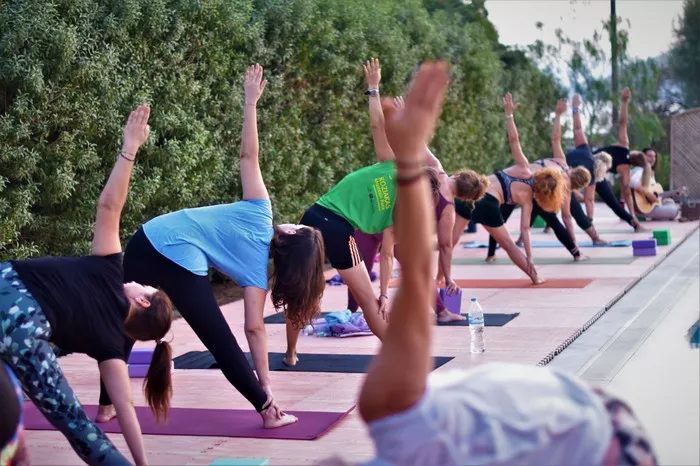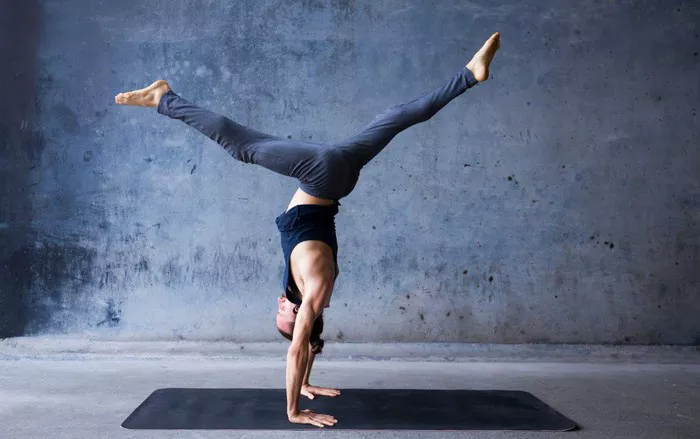Yoga, in its purest essence, transcends the physical movements and postures practiced on the mat. Each asana (pose) carries with it layers of symbolic, energetic, and spiritual significance that enrich the practitioner’s journey toward self-awareness and inner harmony. Among these, the Cow Face Pose, known as Gomukhasana in Sanskrit, stands out as a profound posture that opens not only the body but also the spirit. This article delves deeply into the spiritual meaning of Gomukhasana, revealing why it is more than a stretch or a physical challenge—why it is a gateway to balance, humility, and emotional release.
What Is Gomukhasana
Before exploring the spiritual essence, it’s important to briefly understand what Gomukhasana looks like physically. The name “Gomukhasana” translates to “Cow Face Pose,” where go means cow, mukha means face, and asana means pose. The posture resembles the shape of a cow’s face, with legs stacked one over the other and arms reaching behind the back to clasp, symbolizing symmetry and union.
Physically, Gomukhasana stretches the hips, shoulders, chest, and arms, offering a deep release to often tight areas. It requires focus, flexibility, and balance, demanding the practitioner’s full presence and body awareness.
The Symbolic Imagery Behind the Cow Face
In traditional Indian culture, the cow is a revered animal symbolizing nourishment, gentleness, and sacredness. The cow represents the Earth’s bounty and the nurturing aspect of life. By embodying the cow’s face, Gomukhasana invites practitioners to connect with these qualities—gentleness with oneself, respect for nature, and a sense of gratitude for life’s sustenance.
Spiritually, the pose encourages us to align our inner self with these nurturing energies. The cow’s face in the pose symbolizes a harmonious balance between strength and softness, grounding and openness, discipline and surrender.
The Spiritual Dimensions of Gomukhasana
1. Cultivating Inner Balance and Harmony
The essence of Gomukhasana is balance. The physical alignment of crossed legs and clasped arms mirrors a spiritual need for equilibrium between opposing forces—masculine and feminine energies, effort and ease, control and surrender. The pose encourages the practitioner to find stillness amidst complexity, balancing polarities within the body and mind.
This balance extends beyond the mat. In life, we face many opposing demands and emotions, and Gomukhasana becomes a practice in cultivating inner harmony despite external chaos. This equilibrium nurtures a calm mind, an open heart, and a steady spirit.
2. Opening the Heart Chakra (Anahata)
The clasping of the arms behind the back in Gomukhasana creates a powerful chest and shoulder opening. From a spiritual perspective, this physical expansion stimulates the Anahata Chakra, the heart center. This chakra is the seat of love, compassion, forgiveness, and emotional healing.
By opening this energy center, Gomukhasana invites practitioners to soften emotional barriers, release past hurts, and embrace vulnerability. It cultivates an expansive sense of love not only toward others but importantly, toward oneself. This heart-opening quality fosters greater empathy and connection in daily life.
3. Releasing Emotional Tension and Stored Trauma
Our bodies often hold onto emotional tension and trauma, especially in the hips and shoulders. Gomukhasana’s deep stretch in these areas acts as a gentle yet effective emotional release mechanism. Spiritually, the pose serves as a tool for liberation—freeing stagnant energy and blocked emotions trapped in the body.
Practicing Gomukhasana regularly allows a deep cleansing process to occur, helping to transform emotional heaviness into lightness and clarity. This release can lead to greater mental peace and spiritual freedom.
4. Cultivating Humility and Patience
Gomukhasana can be physically challenging, especially for those with tight shoulders or hips. The posture demands patience, persistence, and humility. Spiritually, this reflects the yogic path itself—requiring steady practice, self-compassion, and acceptance of one’s current state.
The pose teaches us to embrace our limitations without judgment and to appreciate the slow, gradual progress on the spiritual journey. It reminds us that humility is a vital virtue, opening doors to deeper wisdom and self-understanding.
Historical and Cultural Context of Gomukhasana in Yoga Tradition
Gomukhasana has roots in ancient Hatha yoga traditions, where poses were not simply physical exercises but were viewed as vehicles for spiritual transformation. Historical texts, such as the Gheranda Samhita and Hatha Yoga Pradipika, emphasize the importance of seated postures that stabilize the body and mind to prepare for meditation and pranayama (breath control).
In this lineage, Gomukhasana is more than a stretch; it is a meditative seat, encouraging the stillness and introspection necessary for spiritual awakening. The posture aligns the practitioner physically and energetically, helping to quiet the fluctuations of the mind and cultivate a deeper connection with the self.
How to Deepen Your Spiritual Experience with Gomukhasana
Mindful Breathwork
Integrating mindful breathwork (pranayama) while holding Gomukhasana amplifies its spiritual benefits. Deep, conscious breathing supports the release of emotional tension and encourages the flow of prana (life energy) through the body. Focusing on the breath during this posture helps anchor awareness in the present moment, fostering mindfulness and spiritual presence.
Meditation and Visualization
Adding meditation to your Gomukhasana practice can deepen the spiritual experience. Visualize the heart chakra opening like a blooming lotus, radiating love and light. Use the pose as a gateway to inward reflection, cultivating gratitude and compassion.
Intention Setting (Sankalpa)
Before entering the pose, set a clear spiritual intention or sankalpa. This could be an aspiration such as cultivating patience, healing emotional wounds, or embracing humility. Holding the posture with this conscious intention transforms the practice from mere physical exercise to a sacred ritual.
Modern-Day Relevance: Why Gomukhasana Matters Today
In our fast-paced, stress-filled world, many people experience physical stiffness, emotional overwhelm, and a sense of disconnection from themselves and others. Gomukhasana offers a timeless remedy to these modern ailments by encouraging deep body awareness, emotional release, and spiritual balance.
Practicing this pose regularly invites individuals to slow down, listen to their bodies, and open their hearts. It nurtures resilience, emotional intelligence, and spiritual grace—qualities that are invaluable in navigating contemporary life challenges.
Conclusion
Gomukhasana, the Cow Face Pose, is a rich tapestry of physical, energetic, and spiritual significance. It is a posture that not only stretches and strengthens the body but also invites the practitioner into a deeper relationship with their inner self. Through balance, heart-opening, emotional release, and humility, Gomukhasana embodies the sacred path of yoga—a path toward wholeness, peace, and unconditional love.
By approaching Gomukhasana with mindful awareness and spiritual intention, practitioners can unlock its full potential as a transformative tool for healing and self-discovery. This humble yet profound posture holds the promise of guiding us gently back to our true nature, where harmony and compassion reside.
Related Topics:

























